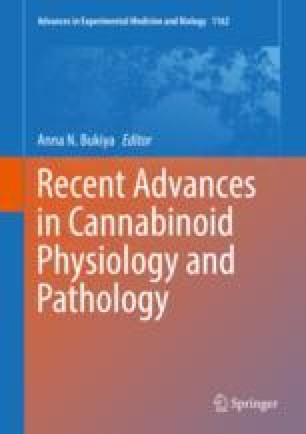 “Cannabinoid receptors type 1 (CB1) and type 2 (CB2) are promising targets for a number of diseases, including obesity, neuropathic pain, and multiple sclerosis, among others.
“Cannabinoid receptors type 1 (CB1) and type 2 (CB2) are promising targets for a number of diseases, including obesity, neuropathic pain, and multiple sclerosis, among others.
Upon ligand-mediated activation of these receptors, multiple receptor conformations could be stabilized, resulting in a complex pattern of possible intracellular effects. Although numerous compounds have been developed and widely used to target cannabinoid receptors, their mode of action and signaling properties are often only poorly characterized.
From a drug development point of view, unraveling the underlying complex signaling mechanism could offer the possibility to generate medicines with the desired therapeutic profile.
Recently, an increased interest has emerged for the development of agonists that are signaling pathway-selective and thereby do not evoke on-target adverse effects. This phenomenon, in which specific pathways are preferred upon receptor activation by certain ligands, is also known as ‘biased signaling’.
For a particular group of cannabinoid receptor ligands (i.e. CB1/CB2 agonists), namely the synthetic cannabinoid receptor agonists (SCRAs), the research on biased signaling is still in its infancy and interesting outcomes are only recently being revealed.
Therefore, this review aims at providing insights into the recent knowledge about biased agonism mediated by SCRAs so far. In addition, as these outcomes are obtained using a distinct panel of functional assays, the accompanying difficulties and challenges when comparing functional outcomes are critically discussed. Finally, some guidance on the conceptualization of ideal in vitro assays for the detection of SCRA-mediated biased agonism, which is also relevant for compounds belonging to other chemical classes, is provided.”
https://www.ncbi.nlm.nih.gov/pubmed/31472128
https://www.sciencedirect.com/science/article/abs/pii/S0006295219303132?via%3Dihub

 “Thanks to the success of modern antiretroviral therapy (ART), people living with HIV (PLWH) have life expectancies which approach that of persons in the general population. However, despite the ability of ART to suppress viral replication, PLWH have high levels of chronic systemic inflammation which drives the development of comorbidities such as cardiovascular disease, diabetes and non-AIDS associated malignancies.
“Thanks to the success of modern antiretroviral therapy (ART), people living with HIV (PLWH) have life expectancies which approach that of persons in the general population. However, despite the ability of ART to suppress viral replication, PLWH have high levels of chronic systemic inflammation which drives the development of comorbidities such as cardiovascular disease, diabetes and non-AIDS associated malignancies. “The family of chemical structures that interact with a
“The family of chemical structures that interact with a 





